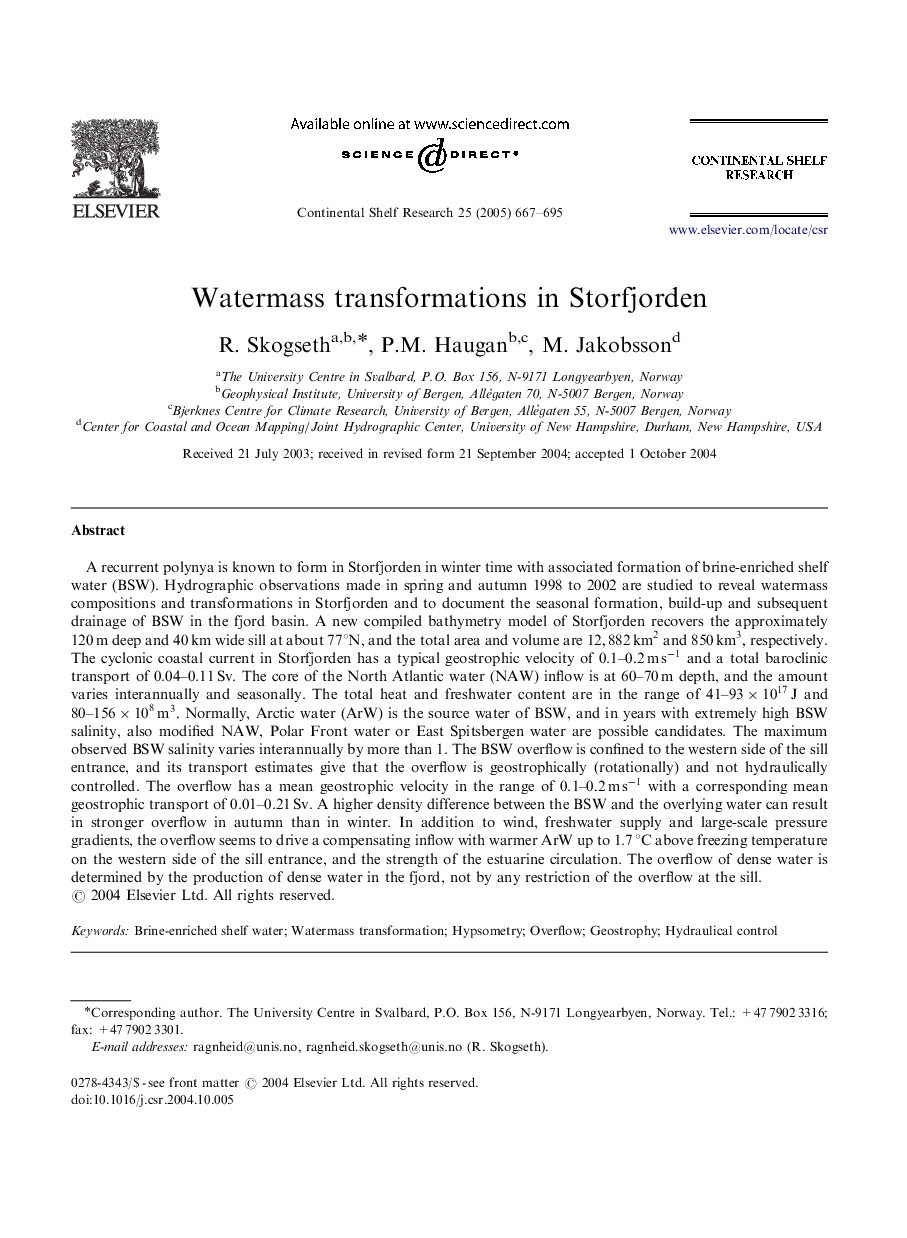| کد مقاله | کد نشریه | سال انتشار | مقاله انگلیسی | نسخه تمام متن |
|---|---|---|---|---|
| 9479182 | 1626195 | 2005 | 29 صفحه PDF | دانلود رایگان |
عنوان انگلیسی مقاله ISI
Watermass transformations in Storfjorden
دانلود مقاله + سفارش ترجمه
دانلود مقاله ISI انگلیسی
رایگان برای ایرانیان
موضوعات مرتبط
مهندسی و علوم پایه
علوم زمین و سیارات
زمین شناسی
پیش نمایش صفحه اول مقاله

چکیده انگلیسی
A recurrent polynya is known to form in Storfjorden in winter time with associated formation of brine-enriched shelf water (BSW). Hydrographic observations made in spring and autumn 1998 to 2002 are studied to reveal watermass compositions and transformations in Storfjorden and to document the seasonal formation, build-up and subsequent drainage of BSW in the fjord basin. A new compiled bathymetry model of Storfjorden recovers the approximately 120 m deep and 40 km wide sill at about 77°N, and the total area and volume are 12,882km2 and 850km3, respectively. The cyclonic coastal current in Storfjorden has a typical geostrophic velocity of 0.1-0.2ms-1 and a total baroclinic transport of 0.04-0.11 Sv. The core of the North Atlantic water (NAW) inflow is at 60-70 m depth, and the amount varies interannually and seasonally. The total heat and freshwater content are in the range of 41-93Ã1017J and 80-156Ã108m3. Normally, Arctic water (ArW) is the source water of BSW, and in years with extremely high BSW salinity, also modified NAW, Polar Front water or East Spitsbergen water are possible candidates. The maximum observed BSW salinity varies interannually by more than 1. The BSW overflow is confined to the western side of the sill entrance, and its transport estimates give that the overflow is geostrophically (rotationally) and not hydraulically controlled. The overflow has a mean geostrophic velocity in the range of 0.1-0.2ms-1 with a corresponding mean geostrophic transport of 0.01-0.21 Sv. A higher density difference between the BSW and the overlying water can result in stronger overflow in autumn than in winter. In addition to wind, freshwater supply and large-scale pressure gradients, the overflow seems to drive a compensating inflow with warmer ArW up to 1.7 °C above freezing temperature on the western side of the sill entrance, and the strength of the estuarine circulation. The overflow of dense water is determined by the production of dense water in the fjord, not by any restriction of the overflow at the sill.
ناشر
Database: Elsevier - ScienceDirect (ساینس دایرکت)
Journal: Continental Shelf Research - Volume 25, Issues 5â6, MarchâApril 2005, Pages 667-695
Journal: Continental Shelf Research - Volume 25, Issues 5â6, MarchâApril 2005, Pages 667-695
نویسندگان
R. Skogseth, P.M. Haugan, M. Jakobsson,